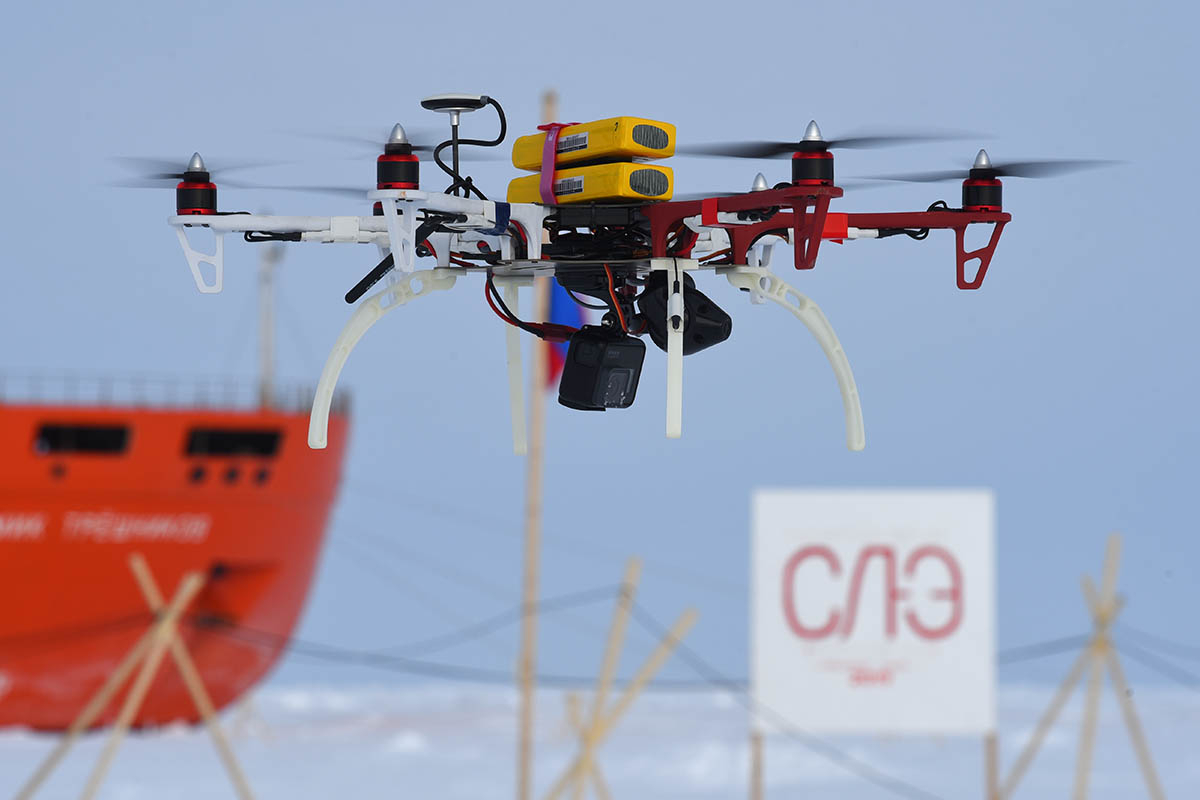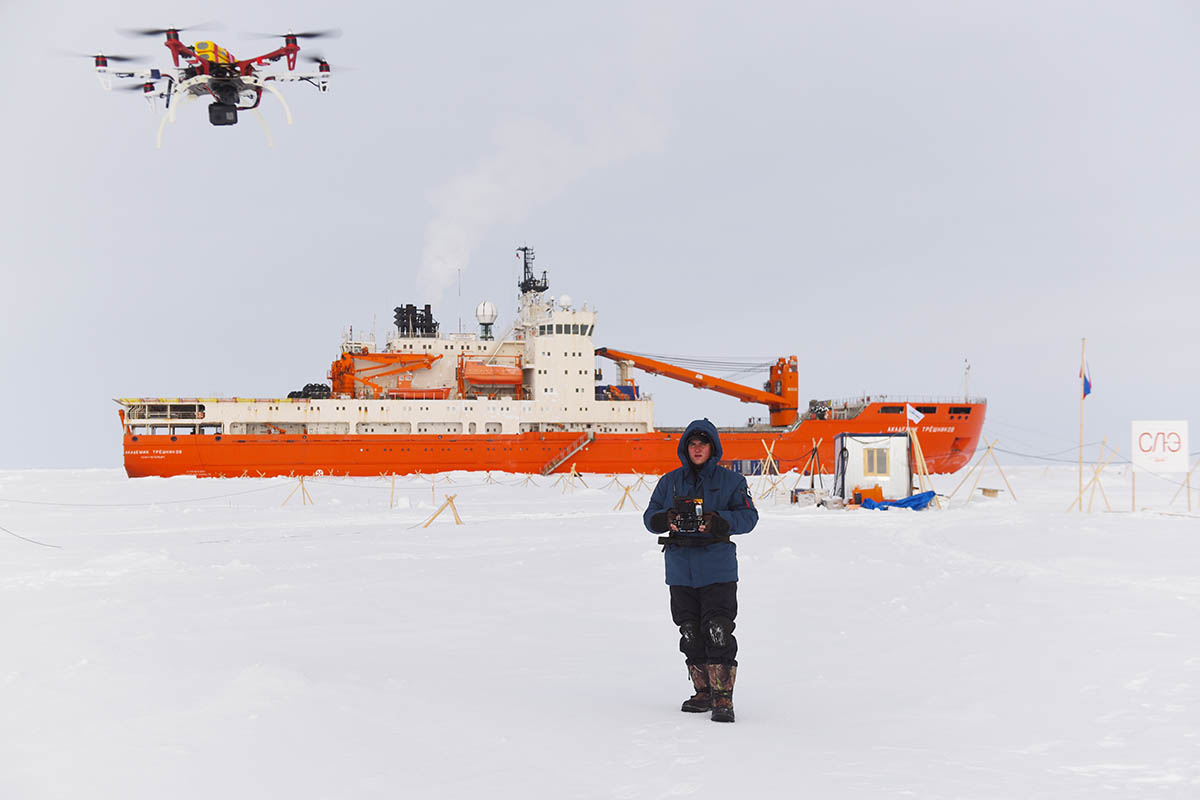Scientists from St Petersburg University study Arctic ice cover with the help of drones
In the first stage of the ‘Trans Arctic 2019’ expedition scientists from St Petersburg University will examine the impact that irregularities on the surface of the Arctic ice cover have on the rate of ice melting.
In many areas of the Arctic basin a significant surface area of drifting ice has been covered by ridged sea ice. These are debris mounds of ice forced up by pressure due to climate change in the last decade.
‘This is connected with an increase in the area of thinner first year ice and a decrease in thicker old ice. The few theoretical studies and experiments that were conducted show that the energy and mass exchange of ice ridges differs significantly from that of flat ice. This fact has been totally ignored so far by atmosphere–ocean general circulation models,’ said Boris Ivanov, Associate Professor of St Petersburg University (Department of Oceanology), talking about the main ideas behind current research.
The current task is to develop a technology and methodology which would make it possible to assess energy exchange near ice ridges.
Boris Ivanov, Associate Professor of St Petersburg University
The main tools for measuring sea ice irregularities are drones: unmanned aerial vehicles. Scientists can use them to measure albedo: the specular properties of hummocks. ‘It is difficult to study the processes of energy exchange of ice ridges because of their inaccessibility for standard meteorological and actinometrical stations. To solve this problem a special system was developed, which can be placed on the drone. It contains a device for measuring the reflected solar radiation and the surface temperature of ice ridges. This ‘box’ is very simple to operate. It is enough just to fix it to the drone and push the power button before flight’, noted Aleksandra Urazgildeeva. She works for the Public Relations Department at St Petersburg University, and is a member of the first stage of the “Trans Arctic 2019” expedition.
An actinometrical tower with two pyranometers registers continuously incoming and reflected solar radiation. It will be installed on the flat ice surface in conjunction with flying drones over ice ridges. In addition to actinometric measurements, scientists conduct a continuous assessment of the ice-containing air layer on the upwind and downwind sides of the ridge and on the flat ice at equal intervals from the ridge. ‘These measurements are necessary for the quantitative assessment of vertical turbulent exchange near ice ridges. They will allow us to quantify the nature and energy exchange between atmosphere and sea ice cover,’ said Aleksandra Urazgildeeva.
Results will be obtained by scientists from St Petersburg University until the drifting station “North Pole 2019” finishes its work. They will form the basis for new methods of measuring solar radiation over ice ridges and help to improve existing climate models.







